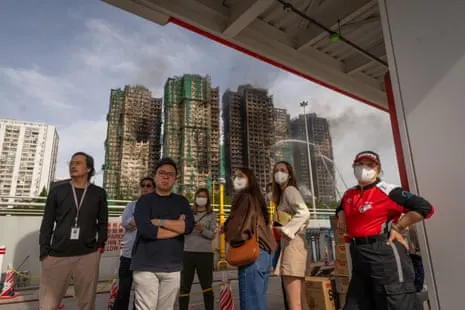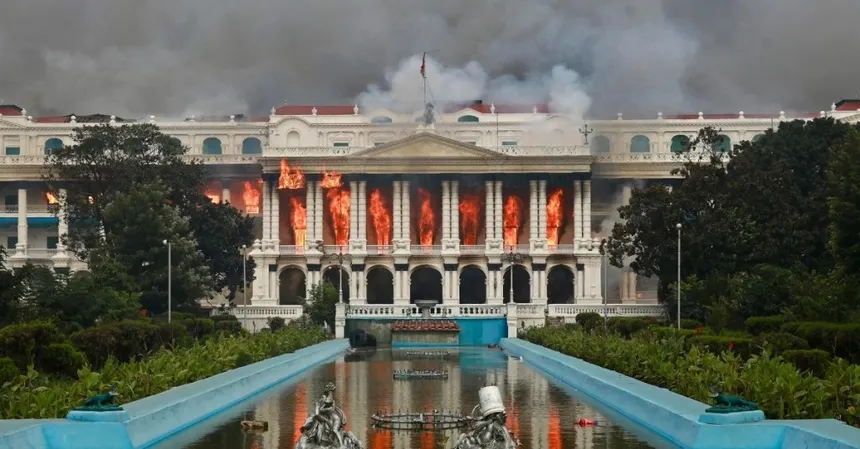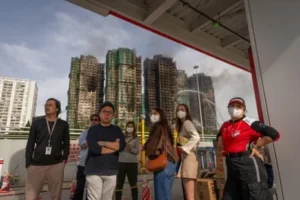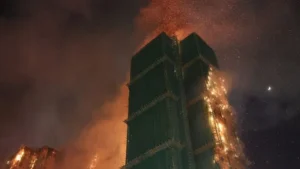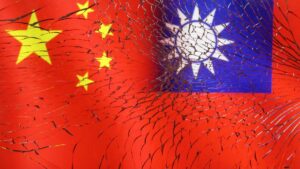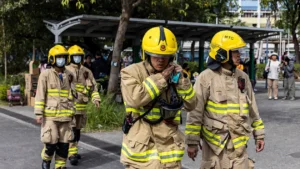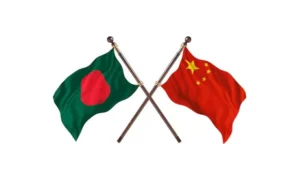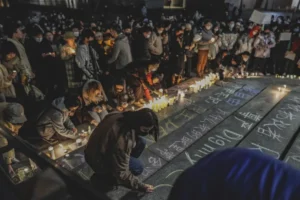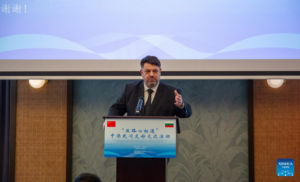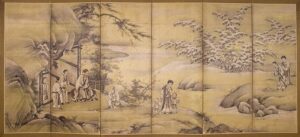‘They sacrificed their freedom’: remembering incarcerated black activists
Show caption Jalil Muntaqim by Sophia Dawson. Photograph: Courtesy of the artist Art ‘They sacrificed their freedom’: remembering incarcerated black activists Artist Sophia Dawson has created artwork using correspondence and ephemera from jailed activists to call attention to their situation, past and present Dream McClinton Wed 1 Sep 2021 19.55 BST Share on Facebook
Share on Twitter
Share via Email
When artists choose to deal with the black liberation movement, it’s most often the legacy: the freedoms, the historical posters, the imagery. But it’s the present, as the artist and activist Sophia Dawson tells the Guardian, that is just as tragic.
“I used to sleep in my African American history class,” she says. “I didn’t want to sleep in the class, it’s just a side-effect of being pregnant. [My professor] used to show films … But then, one day, she talked about this documentary, and it had to do with the Black Panther party so it piqued my interest. So, I was like, ‘Let me try to stay up today’ and that was when I learned of the term political prisoner. I wasn’t familiar with that part of history.”
Vibrant like the colors of her paintings, the Brooklyn-bred artist then joined the noble pursuit of freedom for the incarcerated prisoners of the black liberation movement. “The last 11 years of my life shifted from that class,” she says. “I started to write all the political prisoners [in 2010]. At first, I was writing a few, and then, in 2015, that’s when I sent out a snail mail blast to everyone.”
Dawson holds a clear and evident veneration for the people she refers to as elders, former members of the Black Liberation Army, the Black Panther party and Move Africa. In their letters, they joke and laugh and discuss love, politics, their potential release. She eventually used these letters to create portraits of those still incarcerated, which are included in the new art exhibition Correspondence. An excerpt from Dawson’s larger series, To Be Free, Correspondence acts as a visual human rights campaign advocating for the release of black liberation political prisoners, now septuagenarians and octogenarians. Curated with the Bishop Gallery, it features four of Dawson’s portraits of political prisoners and a feature film edited by Dawson herself.
Sophia Dawson and a blown-up image of a letter from one of the political prisoners she has been corresponding with. Photograph: Courtesy of the artist
“I treat painting as a form of prayer,” Dawson says. For Dawson, the work is not only personal and intimate, it’s biblical and spiritual, a modern-day Epistles. The celestial and mundane collide in the acrylic paintings, set against copies of letters from each person depicted and photocopies of Dawson’s own Bible with applicable scripture, with a texture of black glitter, diamond dust, obsidian and asphalt making up the hair.
Mutulu Shakur, the 71-year-old black liberation activist and stepfather to the late Tupac Shakur who has been incarcerated for more than 30 years for his involvement in a robbery, is one of the two prisoners depicted who remain incarcerated. The other is Ed Poindexter, jailed for killing a police officer, despite maintaining his innocence. The other activists featured, such as Janet Africa, who was imprisoned after police besieged the commune to which she belonge,; Robert Seth Hayes, who was convicted for a murder in which he denied any involvement; and Jalil Muntaqim, convicted for killing two police officers, have been released.
Dawson credits it all – the inspiration to paint political prisoners, her connection with her subjects and the newfound interest in her work – to her belief in God. “How people receive my work has changed drastically. In 2010, I was an angry black woman, an angry black female artist,” she says. “That was the only way that the work was being received. It wasn’t going very well. I don’t know. I guess because I was picked to do it, I knew the Lord wanted me to do it, I didn’t really care … I was like, ‘Whatever, I’m just going to do what God tells me to do. When the world is ready for it, they’ll be ready for it.’ But there’s definitely been a shift in that regard because talking about political imprisonment was not always interesting to people for whatever reason.”
While she carries her passion without anger, this wasn’t always easy. In fact, she felt a lot of resentment initially. “I’ve sat down with original members of the Panther party and they said that, ‘we woke up every day knowing that we might not make it home, but it was worth it because we wanted the next generation to be OK.’ So, to know that they sacrificed their freedom, their life, for my generation, my son’s generation, and we don’t even know their names, and they don’t even know where they’re getting their next meal, that doesn’t sit well with me.”
A book of the same name, filled with a collection of letters from several of the political prisoners Dawson wrote to over the past 10 years, accompanies the exhibit. Put together in part by her art school friend and now fellow professor, Marysia Gacek, the Correspondence book was conceived as a fundraising initiative for those just released and those still incarcerated. “Just seeing the few letters, just a little bit of information, was just so extremely powerful. I just felt like I had to help her and see what I could do. The more we talked, the more we talked about [the letters], we decided that we’ll publish it under our imprint,” said Gacek.
A portrait of Dr Mutulu Shaku by Sophia Dawson. Photograph: Courtesy of the artist
“Just reading these letters, some of them made me cry. It’s just so intense. I’m from Poland so a lot of this history is new to me. I didn’t study American history in Europe and it’s not something that they teach specifically so a lot of this was new history that I learned through these stories,” Gacek told the Guardian. Regardless of origin, Gacek believes anyone can connect with the work, as it reflects the everyday humanity of people suffering under oppression. “I think the reaction I would expect from people is the reaction that I had, it’s one of compassion – a true human compassion,” Gacek said.
Since the beginning of the series, several activists have been released, including all remaining members of Move Africa. Janet Africa, whose portrait hangs in the gallery, even asked to go thrifting with Dawson after her release. Even so, their release is not an end of the journey, Dawson said.
“The work is not done. There’s a handful of people who still need to come home. Then there’s those who have come home [and] have felonies. Everything a felon in this country is denied [applies to them]. I know people who came out after serving 30 years as a political prisoner and went, ‘Oh, I have to go check in with my shelter’ and that right there really messes with my mind. That’s a second evil. It even feels like a greater evil, to come out as an elder and you still have a curfew, you’re still struggling to buy food,” Dawson said. “The community that supports them – it’s a handful of people that know about political prisoners – they’re tapped out. They’ve raised money that has helped them to come home. But now, to support an elder is a whole other thing. That’s one of the reasons why the book had to happen.”
With their already limited time waning, Dawson wants to see all of the aging vanguards freed from prison. “The oldest political prisoner is 89 years old. In a short amount of time, what I have to say will change because they won’t be here any more.” But as their spirit carries on, so does Dawson’s resolve to aid them in the quest for freedom. “In spite of all of the wicked that has happened to them, [the political prisoners] still have such a love for people, a love for service,” she says.
As they were called to serve, Dawson feels called to help. History is not yet done with the story of the Black Panther party and black liberation movement, she comments, therefore Correspondence is not an epilogue. Love endures, struggles persist and life continues – as the formerly incarcerated Black Panther party member Muntaqim once signed off in a letter to Dawson, “in continued fierce struggle”.
Correspondence: The Installation is showing at SVA Flatiron Space in New York until 10 September
{{topLeft}} {{bottomLeft}} {{topRight}} {{bottomRight}} {{/goalExceededMarkerPercentage}} {{#goalExceededMarkerPercentage}}{{/goalExceededMarkerPercentage}} {{heading}} {{#paragraphs}} {{#ticker}}{{/ticker}}{{#paragraphs}} {{.}} {{/paragraphs}} {{highlightedText}}
{{#cta}} {{text}} {{/cta}} Remind me in October Email address Please enter a valid email address Please enter your email address Set a reminder Sorry we couldn’t set a reminder for you this time. Please try again later. We will send you a maximum of two emails in October 2021. To find out what personal data we collect and how we use it, view our Privacy Policy We will be in touch to remind you to contribute. Look out for a message in your inbox in October 2021. If you have any questions about contributing, please contact us {{/paragraphs}}

